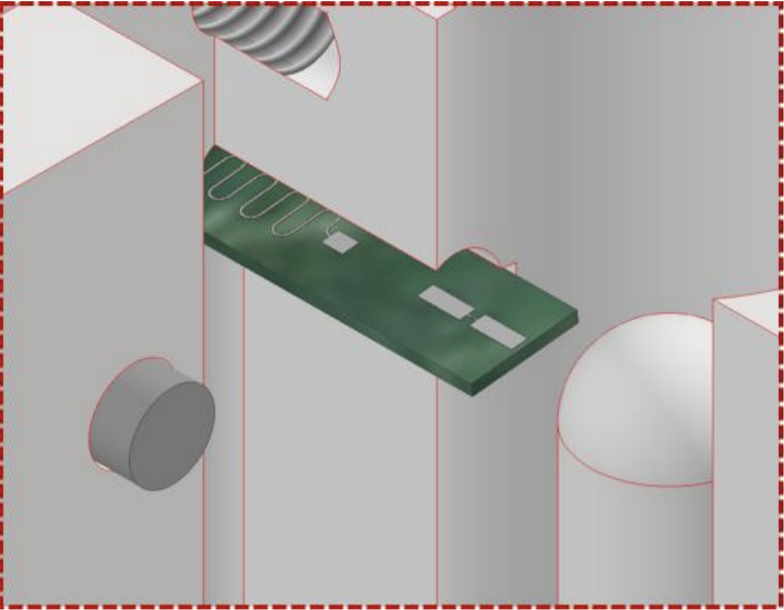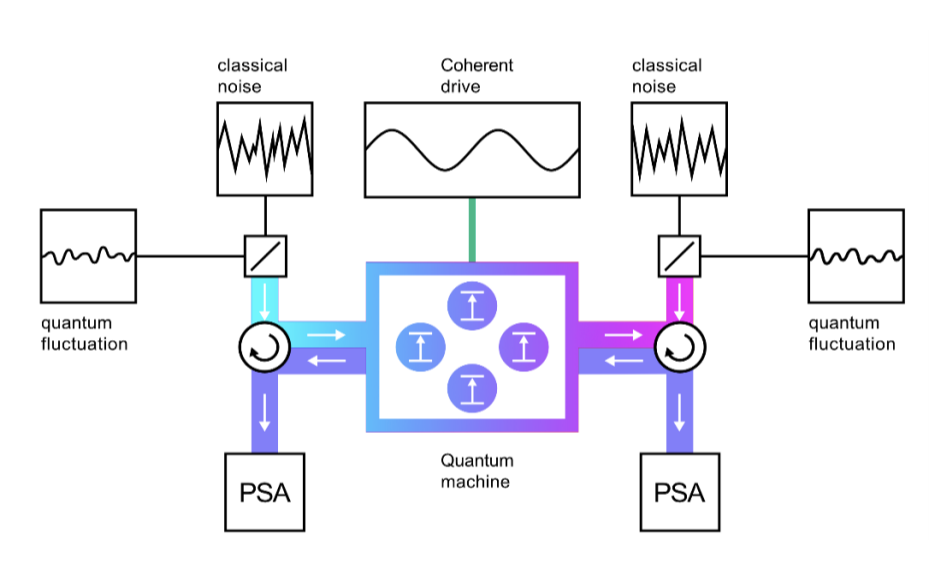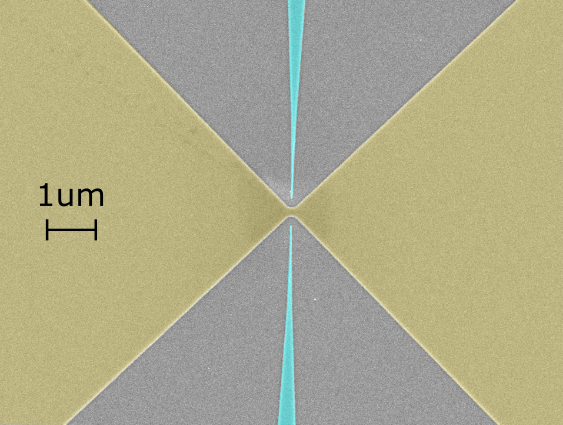Quantum Computing with Bosonic Modes

In the realm of superconducting quantum computing, one approach stands out for its resilience and potential hardware efficiency: continuous-variable quantum computing (CVQC). Rather than using artificial two level system such as transmon or fluxonium qubits, CVQC encodes information in superpositions of many photon number states of harmonic oscillators.
In the 202Q-Lab, we are exploring CVQC using long-lived superconducting microwave cavities combining quantum technology development and innovative superconducting circuit layouts.
Why CVQC?
Quantum computing has the potential to revolutionize numerous fields, from quantum chemistry to secure communication. Yet, building a universal, fault-tolerant quantum computer is one of the most formidable scientific tasks of our time.
That is where CVQC offers an appealing approach. Using bosonic modes, CVQC technique allows researchers to build hardware-efficient and error-resilient quantum information machines. This is possible thanks to the long coherence time of the superconducting cavities which host the robust and easily controllable microwave photonic states that are ideal for implementing complex quantum operations with fewer physical resources.
Our Roadmap to Quantum Computing
The lab’s research currently focuses on task-specific quantum sampling. In the long run we are also interested in universal quantum computing. Our developments are based on these future research directions.
1. Task-Specific Quantum Simulation (Current Focus)
Instead of holding out for universality, our group is developing task-specific quantum simulations. These sub-universal machines are designed to address particular challenges, such as the simulation of molecular vibrations.
Currently, our focus is on boson sampling. Although boson sampling isn’t central to every type of quantum simulation, it’s a strong candidate for showing verifiable quantum speed-up and acts as a practical benchmark for CVQC and broader quantum utility.
2. Universal Quantum Computing via Error Correction
This direction aims at developing a fully universal quantum computer capable of running any algorithm with error-corrected. Achieving this goal requires perfecting each layer of the system, from precise state preparation and control to robust readout and error correction mechanisms.
Despite not being the lab’s current focus, we have explored avenues toward quantum error correction and universal quantum computing, such as efforts in precise state preparation and process tomography. The possibility to engage more with this research line in the future remains open.
Our Research Lines
The lab’s work focuses on different areas of physics, combining quantum optics, superconducting hardware, and control theory. Their research translates to six main research questions:
- Hardware Engineering: Designing and optimizing 3D and planar microwave cavities to support long-lived bosonic states and minimize loss channels.Paper (to be linked): High quality three-dimensional aluminum microwave cavities.
- State Preparation in Linear Cavities: Leveraging SNAP-displacement sequences and optimal control to prepare complex quantum states in linear resonators.Paper: Experimental realization of deterministic and selective photon addition in a bosonic mode assisted by an ancillary qubit.
Paper: Robust preparation of Wigner-negative states with optimized SNAP-displacement sequences. - State Preparation in Nonlinear Cavities: Engineering nonlinear resonators with embedded SNAIL-junctions and flux-tunable control, progressing toward ATS-junctions for higher fidelity state preparation.Paper: Universal control of a bosonic mode via drive-activated native cubic interactions.
- High-Efficiency Readout: Developing a digital homodyne and hetrodyne protocol for efficient and accurate readout of stationary bosonic modes.Paper: Digital homodyne and heterodyne detection for stationary bosonic modes.
- Gates on Bosonic States: Constructing and verifying beamsplitting interactions for entangling operations across multiple modes.Paper: Quantum process tomography of continuous-variable gates using coherent states.
- Boson Sampling Verification: Pursuing scalable demonstrations of quantum speed-up via boson sampling in multi-mode planar cavity systems.
The Team Behind the Science
The CVQC team is led by permanent researcher Axel Eriksson, whose vision shapes the lab’s scientific direction, together with post-doc Lukas Splitthoff. He is also responsible for day-to-day coordination and experiment design, especially in multi-mode bosonic coupler experiment towards boson sampling.
The team collaborates to address the common issues that characterize their research, with Lukas and Axel handling the most advanced scientific parts.
Each PhD student brings deep expertise to a research direction:
- Kunal Helambe – specializes in advanced readout methods.
- Niranjan Pittan Narendiran – leads efforts in nonlinear state preparation.
- Kiwmann Hwang – drives research on beam splitting.
- Zheshu Xie – drives research on beam splitting.
Collaborations
The lab’s success is amplified by active collaborations both within Chalmers University and across Europe. Internally, the team works closely with researchers like Giulia Ferrini and Tahereh Abad, while also building on valuable recent collaborations with Timo Hillmann and Théo Sépulcre. These present and past collaborators’ expertises strengthens the theoretical and experimental frameworks.
Externally, the lab is a core member of VERIQUB, a European initiative uniting quantum research groups in Milan, Paris, and Sweden. Key collaborator Alessandro Ferraro (University of Milan) and his team provide essential theoretical support in boson sampling and simulation verification.
Student Roles in the Lab
Although the lab maintains a focused and intensive pace, we are open to engaging Master’s students, where supervision allows. Our ideal students have strong physics backgrounds, reflecting the advanced technical challenges of CVQC.
Related publications
Digital homodyne and heterodyne detection for stationary bosonic modes
Ingrid Strandberg, Axel Martin Eriksson, Baptiste Royer, Mikael Kervinen, Simone Gasparinetti
Physical Review Letters 133, 063601 (2024)
Universal control of a bosonic mode via drive-activated native cubic interactions
Axel M. Eriksson, Théo Sépulcre, Mikael Kervinen, Timo Hillmann, Marina Kudra, Simon Dupouy, Yong Lu, Maryam Khanahmadi, Jiaying Yang, Claudia Castillo Moreno, Per Delsing, Simone Gasparinetti
Nature Communications 15, 2512 (2024)
Extended quantum process tomography of logical operations on an encoded bosonic qubit
Mikael Kervinen, Shahnawaz Ahmed, Marina Kudra, Axel Eriksson, Fernando Quijandría, Anton Frisk Kockum, Per Delsing, Simone Gasparinetti
Phys. Rev. A 110, L020401 (2024)
Experimental realization of deterministic and selective photon addition in a bosonic mode assisted by an ancillary qubit
Marina Kudra, Martin Jirlow, Mikael Kervinen, Axel M. Eriksson, Fernando Quijandría, Per Delsing, Tahereh Abad, Simone Gasparinetti
Quantum Sci. Technol. 10, 045037 (2025)
Robust preparation of Wigner-negative states with optimized SNAP-displacement sequences
Marina Kudra, Mikael Kervinen, Ingrid Strandberg, Shahnawaz Ahmed, Marco Scigliuzzo, Amr Osman, Daniel Pérez Lozano, Mats O. Tholén, Riccardo Borgani, David B. Haviland, Giulia Ferrini, Jonas Bylander, Anton Frisk Kockum, Fernando Quijandría, Per Delsing, Simone Gasparinetti
PRX Quantum 3, 030301 (2022)
Propagating Wigner-negative states generated from the steady-state emission of a superconducting qubit
Yong Lu, Ingrid Strandberg, Fernando Quijandría, Göran Johansson, Simone Gasparinetti, Per Delsing
Physical Review Letters 126, 253602 (2021)
Universal Gate Set for Continuous-Variable Quantum Computation with Microwave Circuits
Timo Hillmann, Fernando Quijandría, Göran Johansson, Alessandro Ferraro, Simone Gasparinetti, Giulia Ferrini
Physical Review Letters 125, 160501 (2020)
High quality three-dimensional aluminum microwave cavities
Marina Kudra, Janka Biznárová, Anita Fadavi Roudsari, Jonathan J. Burnett, David Niepce, Simone Gasparinetti, Björn Wickman, Per Delsing
Applied Physics Letters 117, 070601 (2020)



